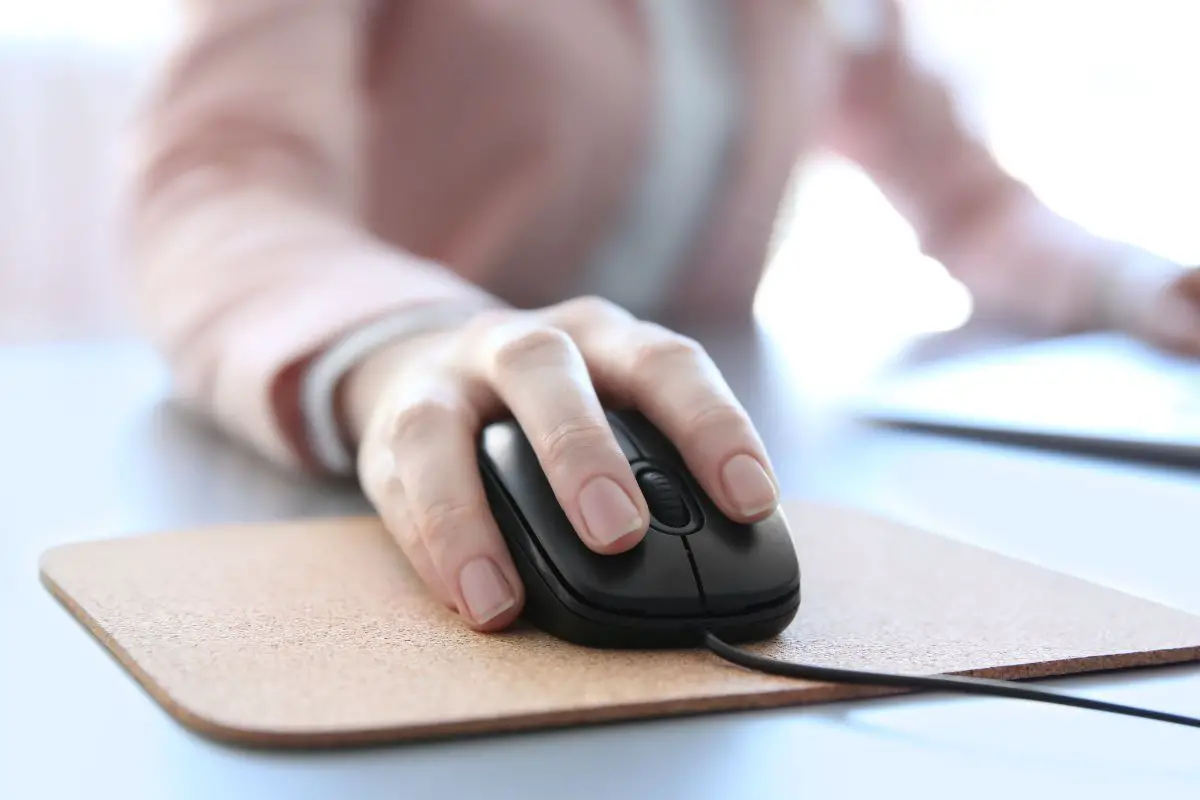
It's relatively easy to make a mousepad at home. All you need is a cardboard box, some self-adhesive foam, and some fabric for the top of it. But instead of trying to DIY the whole thing, you can also use objects around the house as mousepad alternatives, like a hardcover book, or plastic envelope.
My brother ordered a new mousepad, but it took a while to deliver. So, he was looking for a way to makeshift one for the time being. I've made a temporary mousepad before and ran him through what to do. So, I thought about running you through all the steps to follow too.
Contents
I've broken down how to make the best mouse pad into several easy steps below. The finished product will work with an optical mouse, laser mouse, or any other type that you might have.

The first step is choosing a proper base. I'd suggest going with cardboard- it's thick and sturdy enough to handle you constantly moving your mouse on it.
Once you've got a hold of the cardboard, you'll need to cut your mouse pad out. On average, mousepads are around 8 " x 10 ", so you can use this as a reference.
Also, I'd suggest that you add a foam layer over the cardboard. This will give you more cushion, which will make moving your mouse easier. You can use double sided tape to adhere it, or if you look around, you might even be able to find self-adhesive foam.
Once you are done with the cardboard and foam, I'd recommend that you add some fabric to the top of your mousepad.
You'd not only make your mousepad more comfortable to use, but you will also be able to customize it better.
For instance, you can use some custom fabric with prints that match your setup, or, you can get translucent contact paper and draw some art on the mousepad surface.
When it comes to how you can make the cloth mousepad, you'll need a bit of fabric adhesive to glue the fabric on.
You don't have to worry about any of the makeshift mousepads that I ran through damaging your mouse. The only thing that you should worry about is whether your DIY mouse pad would give you tracking that is as accurate as possible - the top layer shouldn't be bumpy or too smooth.
This goes without saying, but you can also break your mouse on your makeshift mouse pad if you are too rough with it.
Instead of trying to make your own mousepad, you can always use objects around the house as alternatives. But keep in mind that for them to work properly, you will need a solid surface to use them on.
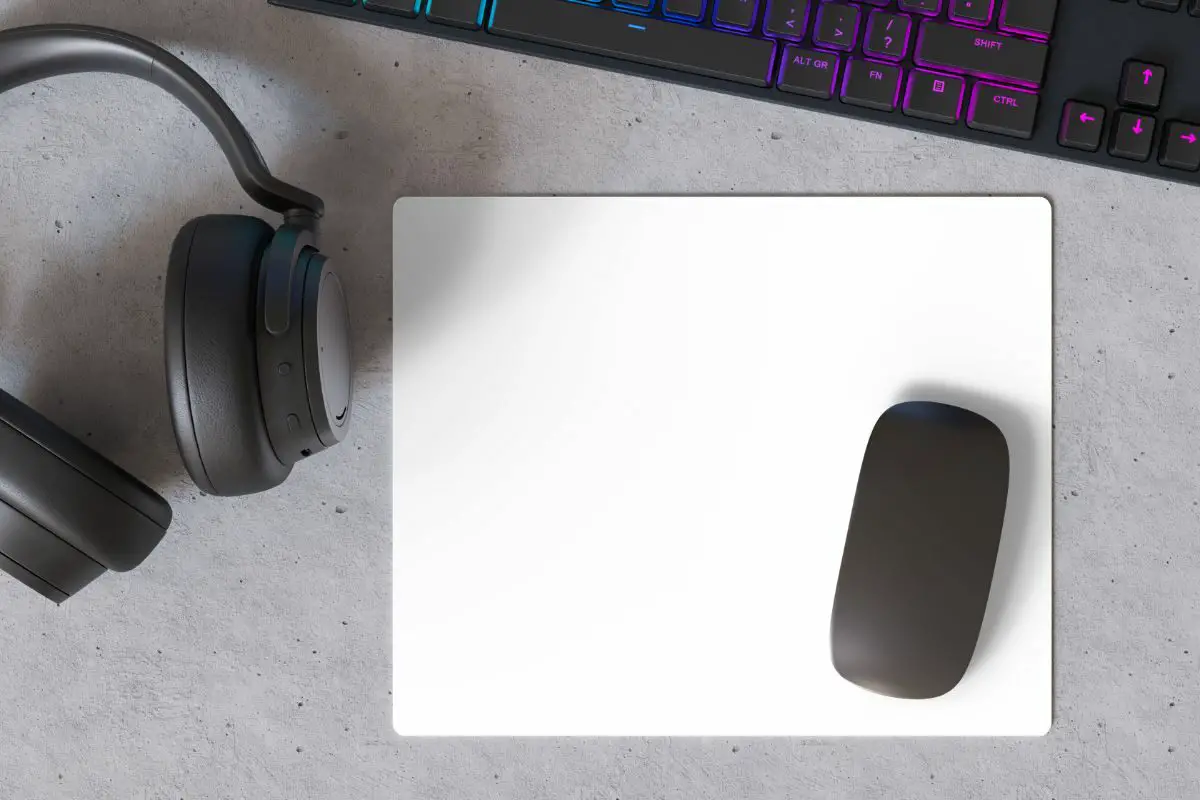
You can always use a hardcover from one of your books as your new mousepad. I'd say that going for a bigger cover is better than a smaller one - you'd get the most surface area to work on.
Instead of a book, you can also use a magazine cover. I think compared to finding a hardcover book around the house, getting hold of a magazine is way easier. Keep in mind what I said about size earlier, though.
You can also get a good mouse pad out of a folder/organizer. Folders are super flexible and come in a variety of different colors.
If you have cardboard lying around the house, you can always cut a piece of it as your mousepad. I actually ran through how you can use it as your base to DIY a good mouse pad yourself. All you'll need is some foam and double-sided tape.
It's not hard to find cardboard either: it's in cereal boxes, and in a bunch of other packaging.
I think that self-healing mats also make good mousepad substitutes. Of course, before you use one, make sure that it's dry.
I especially like that self-healing cutting mats are thick - you can get some good traction out of them.
Although you might not think it, the wax paper makes a good mousepad alternative- it has a solid surface that's smooth enough to use. You can fold it into a couple of layers to help add cushioning if you want.
If you're in a pinch, you can use a bedsheet as a mouse pad alternative. Compared to all of the above options, I don't think that this will work as well, though. You might have to fold a couple of layers to make the bedsheet stable. And also, be mindful of the type of fabric that you are using. It shouldn't be silky.
Just like you can use a bedsheet as a cloth mouse pad, you can also use an old t-shirt. Once again, you'll have to watch the fabric choice and remember to fold once or twice to get some good padding.
Before I get to my last suggestion, I have to mention that you can use a wooden desk bare. It's relatively smooth and solid enough for you to glide roller ball mice on.
If you have table mats for your desk, you definitely try using your mouse on it too.
If you're in an emergency, you can always use your lap as a desk pad. Although is not ideal, especially compared to some of my top suggestions it can still get the job done in a pinch.
I think that there are two really good benefits of using mouse pads, especially if you are a gamer.
You get enhanced usability when using mouse pads. So, you'll have more precision when playing games. You'll especially appreciate this when playing shooter games that require precise aim.
Also, because of the better precision, you don't have to worry about losing control of your mouse either.
At the end of the day, your computer setup won't look good without a nice-looking mouse pad to tie it all in.
Just take a look at RBG's mousepads - they were made to draw a crowd: they light up, so, you'd definitely be able to make your room look cool with one.
You can find two different mousepad types on the market - the soft and hard types. They each have their own individual benefits, which I thought about talking about.
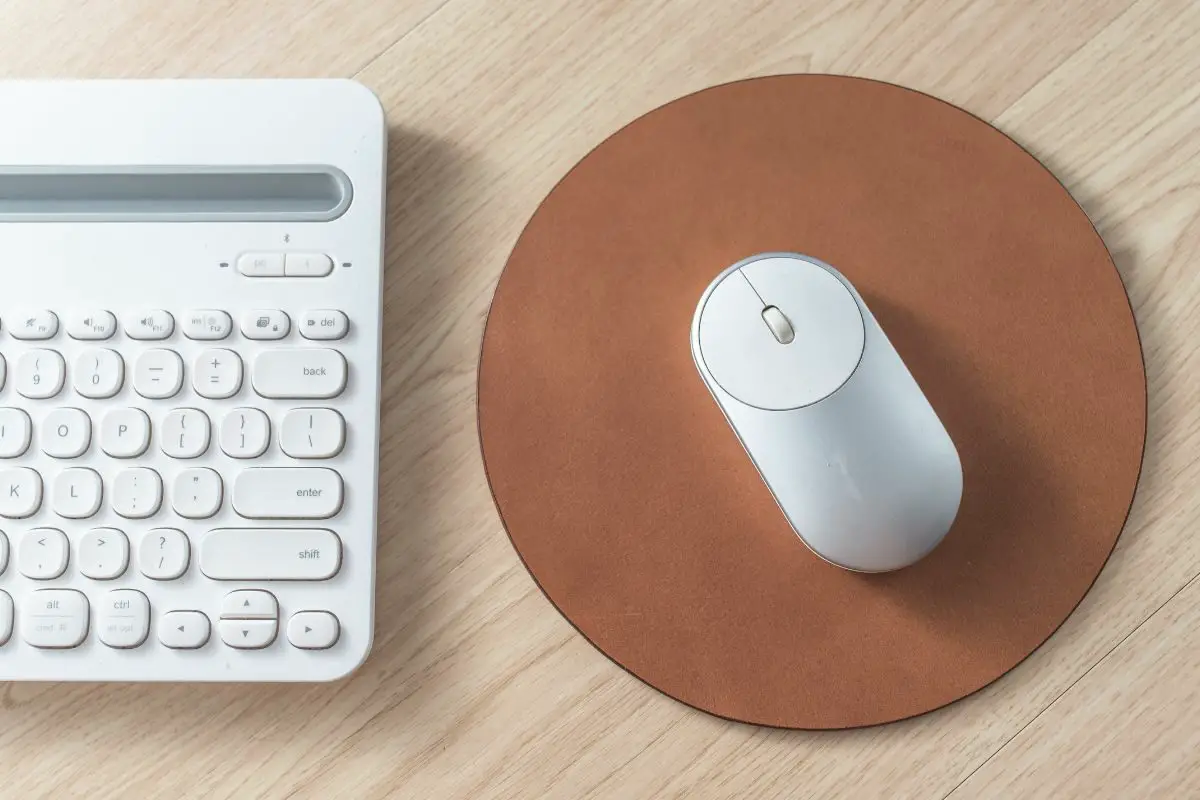
I think that controlling a mouse on a hard mousepad can be tough if it's too slick. This can be big trouble when playing high-intensity games.
Since soft mouse pads have fabric as a top layer, they're smooth but still have a bit of resistance so that your mouse doesn't go sliding off.
Hard mousepads are made with a plastic top layer, so they don't catch as much dirt, or stain that easily. You can easily clean them compared to soft mousepads, which have cloth on top.
As hard mousepads have a plastic top layer, they're smooth. But like I said, they can be too slick sometimes, and cause issues. If it is the right balance, your mouse can easily move on it without a problem, though.
The thing with plastic mousepads is, they come in some limited sizes. They can actually be quite small too. This definitely is not a problem with cloth options, as they come in some good sizes.
Hard mousepads are the best if you want something that will last a while. They will not only be able to handle scratches and dents better, but you don't have to worry about them collecting muck either. Remember what I said about how their polypropylene top layer doesn't absorb any stains?
Soft mousepads can start to fray from the edges. This affects how long they can last. Plus, you can scratch fabric easier than you can a hard plastic coat.
I don't think that there is an issue with using normal paper as your mouse pad, like printer paper. It definitely will get the job done. But compared to using a book or magazine hardcover, the natural grain pattern from the paper just won't be as smooth.
If you're wondering what type of paper you can use, printer paper is a decent choice. Plus, the wax paper that I spoke about earlier is really good too.
Generally speaking, it's not a good idea to use mice on a reflective surface, or any kind of shiny surface either. Laser and optical mice rely on tracking patterns to record their mouse movement. This isn't that easy on reflective surfaces, as their tracking patterns won't be clear.
While on the topic, I think that the light from the laser will reflect if you are using a reflective surface. So, depending on how you're seated, you could end up blinding yourself.
I definitely think you should avoid using a glass table too. You won't be able to get a good grip on it.
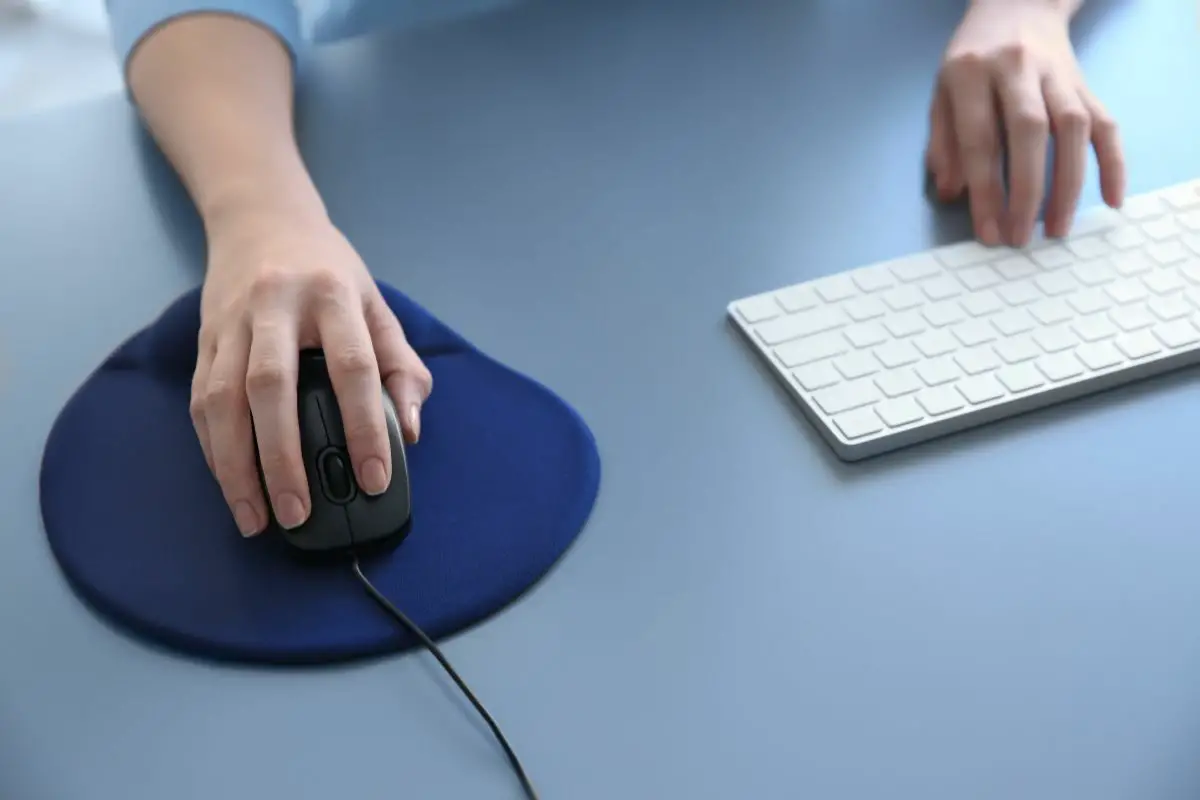
In my opinion, I don't think that you need a mouse pad if you already have a desk mat. You'll get an even, smooth surface that will let you get some precise tracking.
There are some points to consider before deciding whether a desk mat is indeed a good choice, though. You need to make sure there's no texture on it. As I said, rough surfaces just don't let mice track that well.
Also, the quality of the desk mat that you're using matters. You obviously would want something that would be able to handle you moving your mouse on it all the time.
Make sure that you place your desk mat on an even surface too. Even if it's the best desk pad, you wouldn't be able to properly use it on a bumpy surface.
You only need some water and mild dish soap to clean your mousepad. When it comes to dish soap, remember that a little goes a long way. So, you just have to add a drop or two into your water.
You'll need to dampen a clean, soft cloth in the soap solution, and then scrub your mouse pad from the top to the bottom. After this, pat your mousepad down with a dry cloth. It should be ready to use after it's dry.
But what about RGB mousepads? They're a bit different since there are lights on them. Make sure you unplug them first, then gently wipe them down with a lightly dampened cloth. You should let it dry for a couple of hours afterward.
Answered below are some popular questions.
Yes, you can definitely use a touchpad as a mouse alternative. Touchpads are found in laptops, but you can also get them as standalone peripherals. You just have to glide your finger across the touchpad to move the cursor on your screen.
Just like a normal mouse, you can right and left-click. But depending on the touchpad that you are using, you might get access to the same additional gestures too, like two-finger scrolling.
I think that a mouse is faster than a touchpad. You get direct control of your cursor's movement. If you were to ask any gamer, they would always tell you that they use an optical mouse over a touchpad.
I've discussed a Magic Mouse in the section below. It's probably the best possible mouse for Macs. On Windows computers, you might be better off using a Razer mouse - it's super smooth, so you get some excellent mouse movement, and it looks quite nice as well.
A magic mouse is Apple's premier wireless computer mouse. It was designed specifically for Mac computers and is known for its sleek designs. You get multi-touch technology out of it: you'll be able to make gestures on your mouse's surface to interact with your computer.
If you work on a widescreen computer, the Magic mouse will be really good, as you are able to scroll in any direction. This can be either top to bottom or left to right.
Also, the Magic Mouse connects to Macs using Bluetooth technology. So, you don't have to worry about unnecessary wires on your computer when you move your mouse.
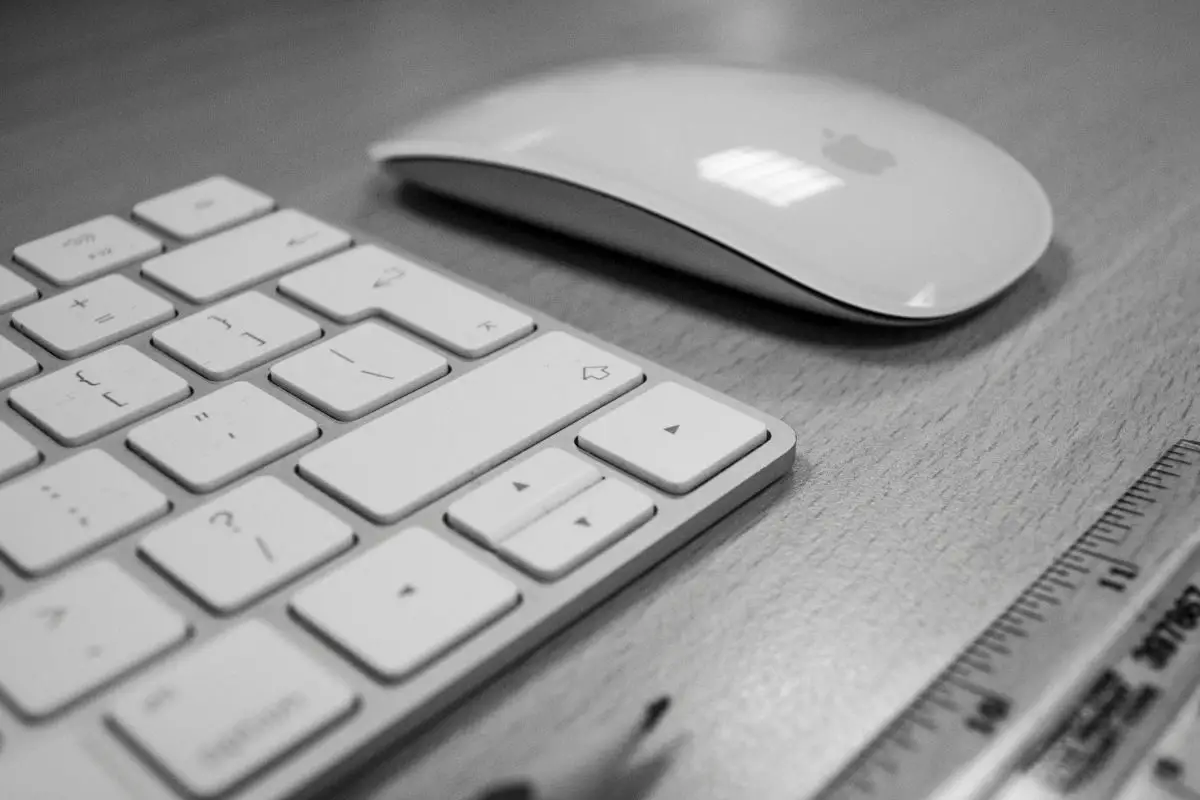
It definitely is easy to make your own mousepad. All you need is a cardboard cut-out (that is the right size), some foam, and a piece of fabric that you can add as a decorative top layer. Once you've got this makeshift mouse pad ready, remember that you need a hard surface (needs to be a smooth surface too) to use it on.
Instead of trying to go ahead with a makeshift mouse pad, you can always find objects around the house that you can use as a mouse pad alternative, like a piece of cardboard, masking tape, or desk pads - definitely avoid glass surfaces and plastic surfaces that are too slick. Once again, you'll need a nice flat surface for them, though.
Hopefully, you found everything that was discussed useful, and are able to make the best mouse pad yourself.
